On this two week Kenya safari you will listen to lions roaring at dawn in the Masai Mara National Reserve, walk alongside giraffe, zebra and a host of others in the Nashulai Maasai Conservancy, discover the stunning Loita forests, gasp at the thundering Thomsons Falls, enjoy the unique experience of exploring the upper canopy of a tropical forest and discover the thrill of hiking in the company of two hundred baboons.
Itinerary
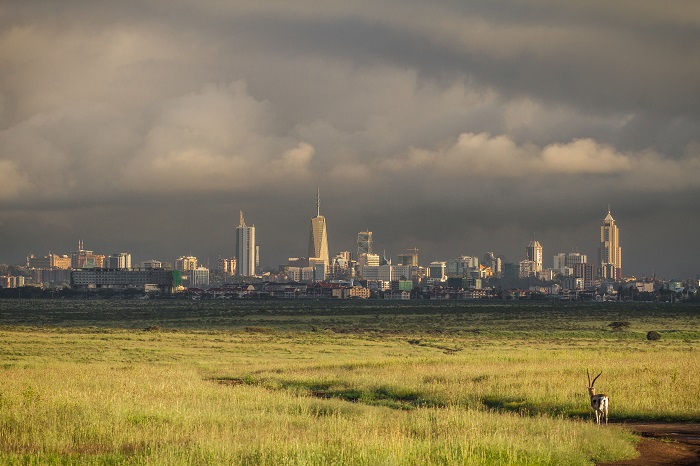 We start our Kenyan adventure with a city tour of Nairobi. Don’t however, expect to see the classic tourist sites on this tour, because this is a city tour with a difference. Sadly, Nairobi has a huge ‘street kids’ population (children who live on the streets and survive on their wits). Nashulai are working with various groups to improve the opportunities of such children and our city tour is led by former street kids. As they show you around the city they grew up in, they will give you the story of their lives, how they ended up on the streets and how they survived. As well as seeing the city through their eyes they will take you to eat in a local restaurant. This is a very personalised experience with one guide to every two guests. In the afternoon we give you the option of either visiting the giraffe centre as well as doing some urban bird-watching. Or you can visit the superb Nairobi National Park. With a backdrop of city centre tower blocks this is a national park unlike any other in Kenya. Surprisingly under visited and much wilder than you might expect, this is a very good place to see black rhinos. Lion are also fairly common and there’s plenty of plains game.
We start our Kenyan adventure with a city tour of Nairobi. Don’t however, expect to see the classic tourist sites on this tour, because this is a city tour with a difference. Sadly, Nairobi has a huge ‘street kids’ population (children who live on the streets and survive on their wits). Nashulai are working with various groups to improve the opportunities of such children and our city tour is led by former street kids. As they show you around the city they grew up in, they will give you the story of their lives, how they ended up on the streets and how they survived. As well as seeing the city through their eyes they will take you to eat in a local restaurant. This is a very personalised experience with one guide to every two guests. In the afternoon we give you the option of either visiting the giraffe centre as well as doing some urban bird-watching. Or you can visit the superb Nairobi National Park. With a backdrop of city centre tower blocks this is a national park unlike any other in Kenya. Surprisingly under visited and much wilder than you might expect, this is a very good place to see black rhinos. Lion are also fairly common and there’s plenty of plains game.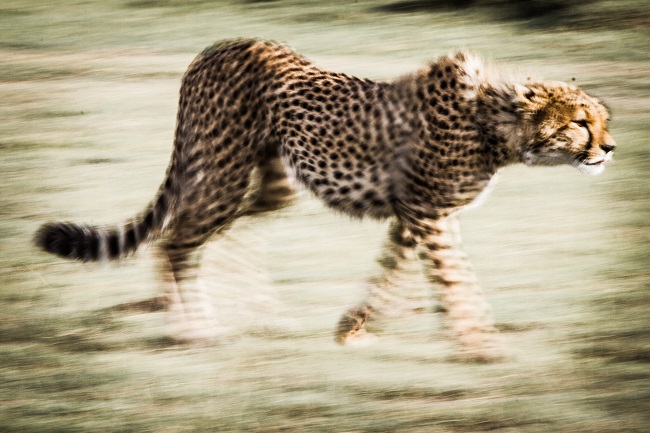 Arrive at Nashulai Maasai Conservancy (4hrs in good traffic) and check into your luxury safari tent. After a three-course lunch set out on a safari within the Nashulai Maasai Conservancy in one of our customised safari vehicles to enjoy a wild chunk of East African wilderness virtually to yourself (only guests of Nashulai Maasai Safaris are allowed within the conservancy). The landscapes within the conservancy are very varied and a complete contrast to those of the nearby national reserve. Here, large, grassy plains are interspersed with areas of dense bush and throughout there are rivers, streams and pools of water which act as natural wildlife magnets. The wildlife populations in the conservancy are impressive, and you are certain to see large numbers of giraffe, zebra, baboons, impala, warthog, wildebeest and many more antelope and gazelle. Buffalo are commonly sighted as are hyenas and elephant. Of the cats there’s a resident pride of lions and cheetah are increasingly common.
Arrive at Nashulai Maasai Conservancy (4hrs in good traffic) and check into your luxury safari tent. After a three-course lunch set out on a safari within the Nashulai Maasai Conservancy in one of our customised safari vehicles to enjoy a wild chunk of East African wilderness virtually to yourself (only guests of Nashulai Maasai Safaris are allowed within the conservancy). The landscapes within the conservancy are very varied and a complete contrast to those of the nearby national reserve. Here, large, grassy plains are interspersed with areas of dense bush and throughout there are rivers, streams and pools of water which act as natural wildlife magnets. The wildlife populations in the conservancy are impressive, and you are certain to see large numbers of giraffe, zebra, baboons, impala, warthog, wildebeest and many more antelope and gazelle. Buffalo are commonly sighted as are hyenas and elephant. Of the cats there’s a resident pride of lions and cheetah are increasingly common.
As the day draws to a close stop for a sundowner drink at a viewpoint inside the conservancy. Return to camp for a three course dinner.
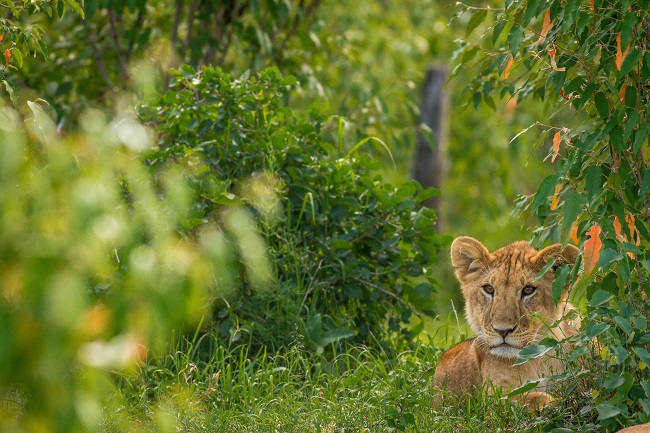 After a filling breakfast you will set out to explore the Nashulai East Conservancy.
After a filling breakfast you will set out to explore the Nashulai East Conservancy.
This area has very varied terrain that includes richly fertile river valleys lined by yellow bark acacia with excellent riverside bird-watching. There are also numerous hills covered in light woodland, which are a real favourite of elephant and buffalo. In fact, Nashulai East sits squarely on an elephant corridor and is one of the best of the Mara area conservancies in which to see these giant creatures. Herds of elephant thirty or more strong are common in this area. In the furthest corner of Nashulai East is the ‘secret plain’ a vast, open grassland with large numbers of grazers, including, in about January to March lots of wildebeest who come here to give birth. This abundance of prey means that the lion pride living here are commonly seen.
Depending on what time you are scheduled to leave Nashulai for your next destination we can also include either a short bush walk, during which your guide will explain how the Maasai use the different plants for traditional medical practises and you’ll get to track the wildlife on foot. Or, we can take you to meet some our conservancy rangers and learn about the work of a conservancy and what their day to day role involves.
 Today is dedicated completely to the Masai Mara National Reserve, a five minutes’ drive away from camp. After a big breakfast you will set out in one of our customised safari vehicles with an expert guide who has intimate knowledge of the Masai Mara National Reserve.
Today is dedicated completely to the Masai Mara National Reserve, a five minutes’ drive away from camp. After a big breakfast you will set out in one of our customised safari vehicles with an expert guide who has intimate knowledge of the Masai Mara National Reserve.
Our expert guide will reveal the wonder of the Mara grasslands to you. The Masai Mara is famous for its big cats. You would be very unlucky to not see at least one group of lions. Leopard and cheetah are both commonly seen as well. The other cats (caracals, servals and wild cats are present but very shy). You will also almost certainly see elephants often in sizeable herds. There are huge quantities of different antelope and gazelle (grants and Thompson gazelle, impala, and topi) and warthogs, zebra, giraffe, hyena, baboons and ostrich are everywhere. While the rivers are populated by crocodiles and hippos. Wildebeest are present year round but between July and early-October the population swells enormously as the million strong herds of migrating wildebeest arrive in the reserve from Tanzania’s Serengeti National park. Seeing such huge numbers of large mammals gathered together is a moment you’ll never forget.
For lunch you can either have a picnic lunch within the reserve and spend the entire day out on safari. Or, you can return to camp for a three-course lunch followed by a rest and then either head back into the reserve for a late afternoon safari or you can do one of our cultural and conservation activities such as a short walking safari within the Nashulai Maasai Conservancy, or meet some of our rangers or visit a Maasai community among other options.
In the evening return to camp where you can enjoy a drink by the fire before a three-course dinner.
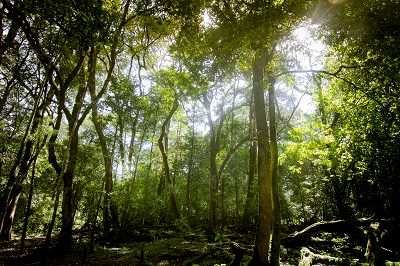
On day six we set out into one of the least known corners of Kenya. Rising up east of the Masai Mara and Nashulai, low scrubby hills (often, wrongly, called the Loita Hills). Slowly, slowly through ever changing landscapes the hills rise higher and the landscape turns greener and thicker until, eventually, you are in the Loita Hills proper and the so-called Forest of the Lost Child. Thick rainforest coats mountain slopes and huddles along river valleys while in other areas small villages and lone houses are surrounded by little terraced hillside fields of crops. This is the most traditional remaining corner of Kenyan Maasai lands and is unknown to most Kenyans never mind foreign visitors. The drive from Nashulai to our simple tented camp in the forest takes about four hours without stops. But, such as the beauty of the landscape on the way and the number of times that guests wish to stop and take it all in that the journey often ends up taking much longer.
On arrival at our camp though you’ll have a late lunch before setting out with our local guides, who are all expert birders and know the footpaths through the forest better than anyone, on a two hour hike (level of difficulty of the hike can be adjusted depending on requirements of the group). Bring binoculars in order to benefit from the spectacular bird-watching and to get closer views of the beautiful black and white colobus monkeys swinging through the trees.
Return to camp in the evening for dinner.
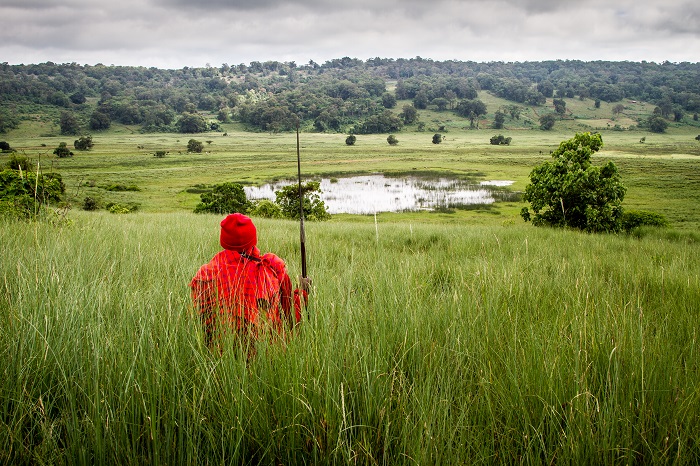 Today will likely be remembered as one of the highlights of your Kenyan adventure. A full-day will be spent hiking through the forests, up to lofty summits and through traditional Maasai villages where the welcome is warm and outside visitors rare. Our expert local guides will point out colobus monkey, hornbills, and turacos among a wealth of other bird and animal life. We will also walk to a waterhole deep in the forest where rust-red forest buffalo (a different species to the buffalo seen in the savannah plains), bushbuck, forest pigs and even elephant congregate for a drink. As well as wildlife, the walk takes in tiny farming villages where you will stop to talk to the local Maasai and maybe be invited inside their compounds to drink tea, and we will climb up to viewpoints to peer down towards Tanzania and the Rift Valley. A picnic lunch will be eaten in the forest or at one of the viewpoints. The exact length and difficulty of the walk can be tailored according to the ability and wishes of the group.
Today will likely be remembered as one of the highlights of your Kenyan adventure. A full-day will be spent hiking through the forests, up to lofty summits and through traditional Maasai villages where the welcome is warm and outside visitors rare. Our expert local guides will point out colobus monkey, hornbills, and turacos among a wealth of other bird and animal life. We will also walk to a waterhole deep in the forest where rust-red forest buffalo (a different species to the buffalo seen in the savannah plains), bushbuck, forest pigs and even elephant congregate for a drink. As well as wildlife, the walk takes in tiny farming villages where you will stop to talk to the local Maasai and maybe be invited inside their compounds to drink tea, and we will climb up to viewpoints to peer down towards Tanzania and the Rift Valley. A picnic lunch will be eaten in the forest or at one of the viewpoints. The exact length and difficulty of the walk can be tailored according to the ability and wishes of the group.
Heading back to our tented camp we will visit the small and very colourful local market town which brings in Maasai from across the region and even from nearby northern Tanzania.
There will be some time to relax and enjoy this wonderfully peaceful setting before sundowner drinks and dinner.
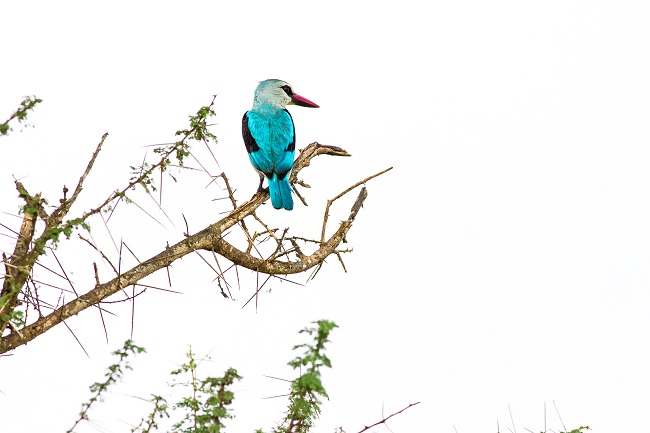 After breakfast we will visit a small swamp that has been restored from a previously degraded state to become a rich bird habitat. After time spent birdwatching we return to camp and visit some of the community projects that are part funded by our stay in Loita. These include an award-winning school and a very successful beading and jewellery project. After lunch we will return to Nashulai Maasai Conservancy. It’s also possible to return to Nashulai straight after breakfast and do an afternoon Nashulai or Masai Mara safari if this is preferred. In the evening enjoy a traditional Kenyan barbeque (called a nyama choma) in the company of Maasai elders from the Nashulai community who will entertain you with stories of the traditional Maasai world they grew up in.
After breakfast we will visit a small swamp that has been restored from a previously degraded state to become a rich bird habitat. After time spent birdwatching we return to camp and visit some of the community projects that are part funded by our stay in Loita. These include an award-winning school and a very successful beading and jewellery project. After lunch we will return to Nashulai Maasai Conservancy. It’s also possible to return to Nashulai straight after breakfast and do an afternoon Nashulai or Masai Mara safari if this is preferred. In the evening enjoy a traditional Kenyan barbeque (called a nyama choma) in the company of Maasai elders from the Nashulai community who will entertain you with stories of the traditional Maasai world they grew up in.
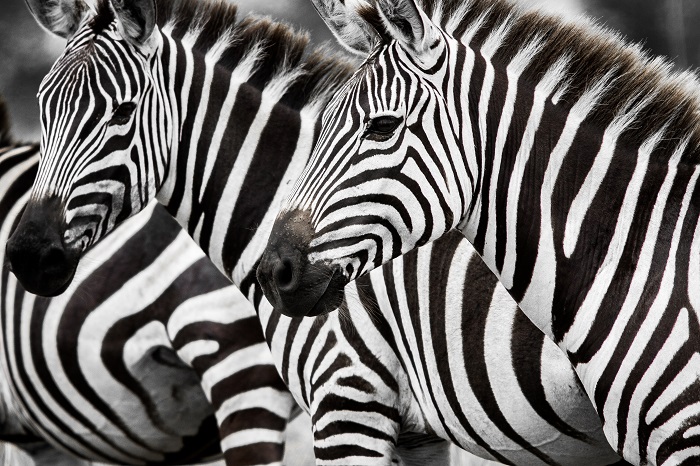 Drive to Lake Naivasha (3hrs) in the Rift Valley. This huge freshwater lake is known for its superb birdlife and large population of hippos. On arrival at our accommodation (which is on a farm) we will settle in, have lunch surrounded by colourful tropical birds and zebra and then go for an afternoon cycle or hike through Hells Gate National Park, which has large numbers of gazelle, antelope, zebra, giraffe and baboon.
Drive to Lake Naivasha (3hrs) in the Rift Valley. This huge freshwater lake is known for its superb birdlife and large population of hippos. On arrival at our accommodation (which is on a farm) we will settle in, have lunch surrounded by colourful tropical birds and zebra and then go for an afternoon cycle or hike through Hells Gate National Park, which has large numbers of gazelle, antelope, zebra, giraffe and baboon.
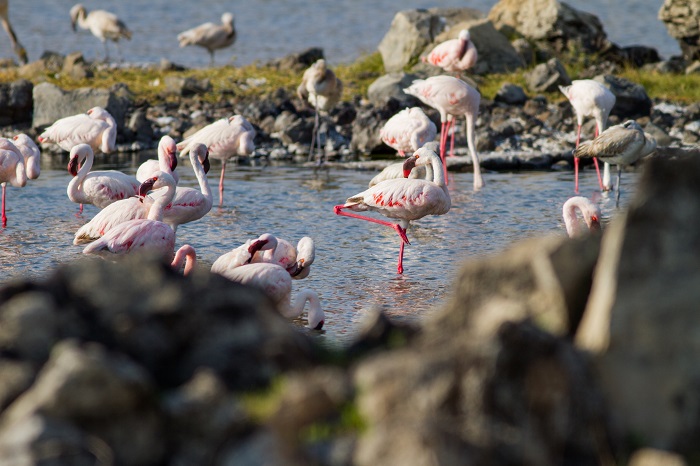 Day trip to either Lake Elementia or Lake Nakuru to see flocks of flamingos (and, in Nakuru, the chance to see rhinos). Flamingos are fickle creatures and we select our days birdwatching location at the last moment depending on where the most flamingos are congregated at that time. We are the only safari company to offer this flexibility. The Lake Naivasha area is the centre of Kenya’s huge cut flower industry and many of the bouquets of flowers sold in Europe are filled with flowers grown in and around Lake Naivasha. After returning from the bird-watching safari we will visit a working flower farm that has a reputation for its eco-friendly policies (which is rare in the cut flower industry).
Day trip to either Lake Elementia or Lake Nakuru to see flocks of flamingos (and, in Nakuru, the chance to see rhinos). Flamingos are fickle creatures and we select our days birdwatching location at the last moment depending on where the most flamingos are congregated at that time. We are the only safari company to offer this flexibility. The Lake Naivasha area is the centre of Kenya’s huge cut flower industry and many of the bouquets of flowers sold in Europe are filled with flowers grown in and around Lake Naivasha. After returning from the bird-watching safari we will visit a working flower farm that has a reputation for its eco-friendly policies (which is rare in the cut flower industry).
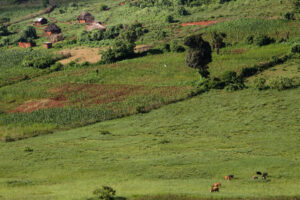
After a leisurely breakfast in the garden we enter a very different side of Kenya on our two hour drive to Nyahururu. Here the climate is much cooler, rain is frequent and instead of rolling savannah grasslands the countryside here consists of small farms, tightly terraced hillsides and patches of forest. The area is densely populated with numerous farming villages and a handful of bustling little agricultural market towns. We pause in Nyahururu to visit the spectacular 74m high Thomsons Falls and to have lunch in the grounds of a colonial-era hotel and restaurant. After lunch we drive onwards for a further 3hrs through ever hotter, drier countryside to arrive at the small Maasai village of Il Polei, at the western end of the vast Laikipia plateau. Il Polei is so small and out of the way that even the majority of people living in the nearest proper town (Nanyuki) have rarely heard of the place and so our arrival here is normally met with considerable interest by the local community. A successful Maasai women’s development project is active in the village and after settling in we will visit some of the womens projects and take a short walk around the village. Please note that this is a very remote area that receives very few visitors. Accommodation is in very simple huts with no running water or mains electricity. But it’s clean, there’s a communal bathroom and the women running the place will make a big fuss over you! It’s a great place to get a feel for a Kenya far removed from safari tourism.
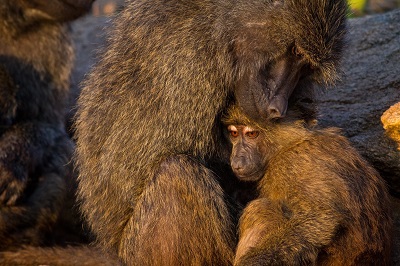
This morning we will be up early for a truly unique experience (and one not offered by any other safari company) as we spend two or three hours walking with a 200-strong troop of habituated baboons who live in the hills surrounding Il Polei. Being just metres (sometimes centimetres!) away from these large primates is a thrilling experience. A group of scientists have been studying these baboons for many years and they are now so habituated to people that they take no notice of humans whatsoever and will carry on their day to day life as if you weren’t there. You will be walking with a scientist who is a part of this study programme and they will be able to answer all your questions about the baboons complex social life. As a wildlife experience this is up there with gorilla and chimpanzee trekking, but the good thing about this is that are hardly ever any other tourists here. We do not advise this activity to children under the age of 12.
In the afternoon we make the short and highly scenic drive to our beautiful, low-key tented camp on the high savannah plains a short way north of Mount Kenya. Depending on our time of arrival we will enjoy a short nature walk in the vicinity of the camp before sundowners and a delicious dinner.
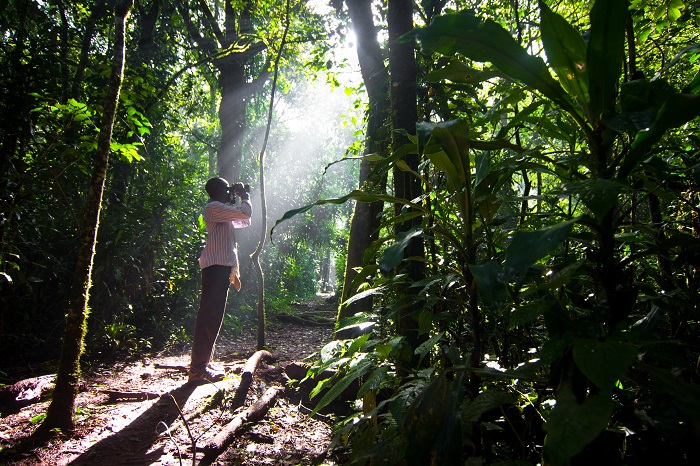 Today is devoted to the Unesco World Heritage Listed Ngare Ndare forest. A vital wildlife corridor between Mount Kenya and the nearby national reserves and conservancies, Ngare Ndare is one of the most beautiful forests in Kenya. In-between the giant 300 year old trees weave rivers and streams and there are at least six natural pools and waterfalls all of startling turquoise colour. As well as beauty, there’s much wildlife interest here too with at least 200 bird species (key species including the Narina trogon and hartlaub’s turaco) recorded and a large number of mammals including elephant, leopard, buffalo, bushbuck and colobus monkey. The forest is also known for its canopy walkway, which is a unique 450m long walkway suspended high up in the trees and from which you can get unusual views of the forest wildlife and birds. The day will be spent on forest and bird-watching walks, swimming in the natural pools and, of course, enjoying the canopy walkway.
Today is devoted to the Unesco World Heritage Listed Ngare Ndare forest. A vital wildlife corridor between Mount Kenya and the nearby national reserves and conservancies, Ngare Ndare is one of the most beautiful forests in Kenya. In-between the giant 300 year old trees weave rivers and streams and there are at least six natural pools and waterfalls all of startling turquoise colour. As well as beauty, there’s much wildlife interest here too with at least 200 bird species (key species including the Narina trogon and hartlaub’s turaco) recorded and a large number of mammals including elephant, leopard, buffalo, bushbuck and colobus monkey. The forest is also known for its canopy walkway, which is a unique 450m long walkway suspended high up in the trees and from which you can get unusual views of the forest wildlife and birds. The day will be spent on forest and bird-watching walks, swimming in the natural pools and, of course, enjoying the canopy walkway.
In the evening we will return to camp for sundowners and dinner.
This fourteen day/thirteen night safari includes
price does not include
Prices for our Baboons and Lions Journey vary depending on the time of year and the number of people in your group. Prices for a Baboons and Lions Journey, based on two people sharing accommodation, start at US$ for two people.